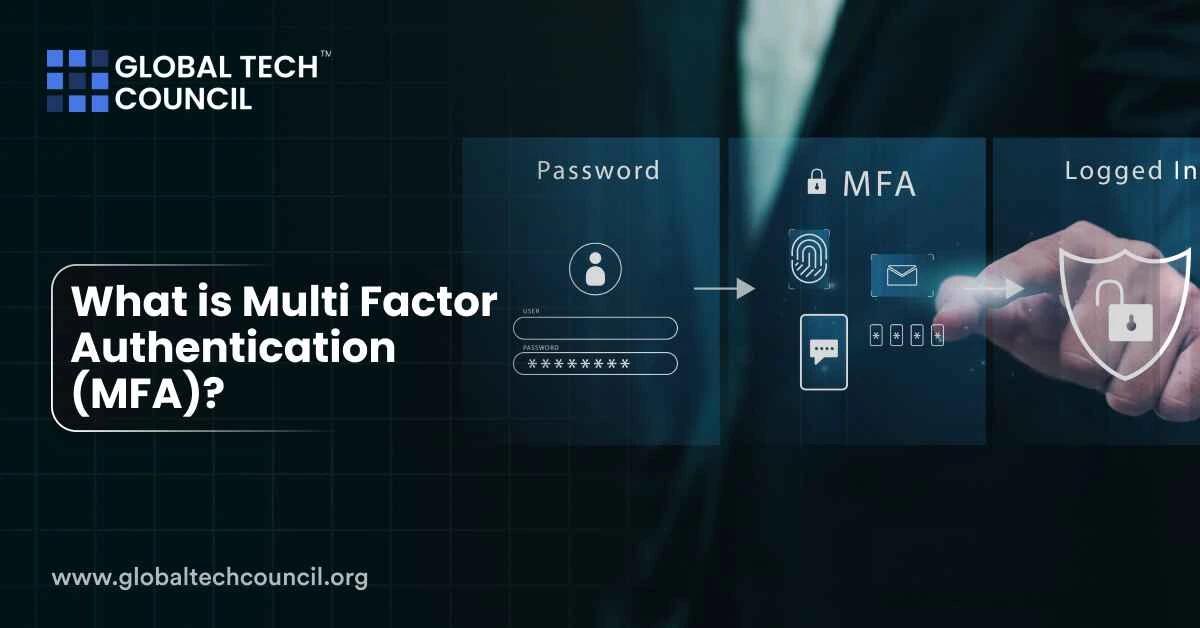
Multi-Factor Authentication (MFA) is a security method that requires more than just a password to access an account. It combines two or more ways to verify your identity. This could be a password and a one-time code, or a fingerprint and a hardware key. The goal is simple—make it harder for attackers to break in.
With just a password, anyone who steals or guesses it can get in. But when MFA is turned on, the attacker would also need access to your phone, fingerprint, or physical key. That extra step makes all the difference.
Why Is MFA Important?
Most cyberattacks today start with stolen passwords. These passwords are often leaked in data breaches or tricked out of people through phishing. MFA adds a second layer of protection, making it much harder for hackers to succeed.
According to Microsoft, enabling MFA can stop over 99% of automated attacks. Yet many businesses still don’t use it, and that leaves them wide open.
How Does MFA Work?
MFA works by requiring users to provide two or more types of credentials before access is granted. These credentials come from three different categories:
Something You Know
A password, PIN, or security answer.
Something You Have
A smartphone, authenticator app, SMS code, or a physical device like a USB key.
Something You Are
Biometric data like a fingerprint, face scan, or voice recognition.
To log in, you need a combination from at least two of these. For example, you enter your password (something you know), then approve a push notification on your phone (something you have).
Types of MFA Factors
| Type | Examples | Security Level |
| Something You Know | Password, PIN, security question | Low |
| Something You Have | Authenticator app, SMS code, USB key | High |
| Something You Are | Fingerprint, facial recognition | Very High |
Types of MFA Methods
There are several ways to set up and use MFA. Some are more secure than others.
SMS or Email Codes
You receive a one-time code by text or email after entering your password. This method is common but can be risky. Attackers can intercept codes through SIM-swapping or phishing.
Authenticator Apps
Apps like Google Authenticator or Authy generate time-based codes that refresh every 30 seconds. These codes don’t travel over the internet, so they’re safer than SMS.
Push Notifications
You get a prompt on your device when trying to log in. All you do is tap “Yes” to confirm. This method is secure and convenient.
Hardware Security Keys
These are small physical devices that you plug into your computer or tap on your phone. They use secure protocols like FIDO2 and are resistant to phishing.
Biometrics
Fingerprint scans or facial recognition are becoming common in smartphones and modern laptops. When paired with another method, they make MFA even stronger.
Benefits of Using MFA
- Stops unauthorized access even if passwords are stolen
- Protects sensitive data for individuals and businesses
- Prevents phishing and credential stuffing attacks
- Helps meet compliance requirements
- Builds trust with customers and users
MFA isn’t just for tech teams. It’s for anyone who logs in to email, cloud apps, financial systems, or customer platforms.
MFA Use Cases and Benefits
| Use Case | How MFA Helps | Who It’s For |
| Personal Accounts | Stops hackers from accessing emails, bank accounts | Everyone |
| Work Accounts | Protects sensitive business systems | Employees, Remote Workers |
| Admin Portals | Secures access to powerful system tools | IT Teams, Admins |
| Financial Transactions | Verifies identity before approving actions | Banking, Fintech Users |
| Compliance & Audits | Meets security standards like GDPR or HIPAA | Businesses & Enterprises |
Challenges and Weak Points
MFA is powerful, but not perfect. Here are a few things to watch out for:
- SIM-Swap Attacks: Hackers trick mobile carriers to transfer your number to their phone and steal SMS codes.
- MFA Fatigue: Attackers flood users with repeated push requests, hoping they accidentally approve one.
- Weak Recovery Options: Poorly designed reset methods can let attackers bypass MFA.
- User Resistance: People may find MFA annoying if it interrupts their workflow too much.
That’s why choosing the right method—like push-based prompts or hardware keys—is important.
MFA Trends in 2025
As threats evolve, so does MFA. Here are some of the biggest trends right now:
Passwordless MFA
This method removes passwords completely. Instead, you log in using biometrics or a hardware key. It’s faster and more secure.
Adaptive MFA
This checks your risk level—location, device, behavior—and adjusts the authentication steps accordingly.
Behavioral Biometrics
MFA systems are starting to track how you type, scroll, or move your mouse. These patterns can help verify your identity without interrupting you.
Phishing-Resistant MFA
More companies are switching to hardware keys that can’t be tricked by fake websites.
Big companies like Microsoft already use these methods for most of their employees. Banks in countries like Australia are phasing out SMS-based codes in favor of safer options.
Who Should Use MFA?
The answer is simple—everyone. Whether you’re a solo entrepreneur, employee, student, or business leader, MFA adds a much-needed layer of protection.
If you work in cybersecurity, or want to, a cybersecurity certification can teach you how MFA works in real-world systems and how to deploy it correctly.
If you’re leading a business or handling user data, the marketing and business certification helps you connect digital trust with customer security.
And if you’re exploring how technologies like biometrics, AI-based authentication, or post-quantum encryption shape the future of login systems, the deep tech certification gives you the advanced edge.
Conclusion
Multi-Factor Authentication is one of the easiest and most effective ways to protect accounts. It adds layers that block attackers—even when your password is stolen. With newer methods like hardware keys, biometrics, and adaptive systems, MFA continues to grow stronger and more user-friendly.